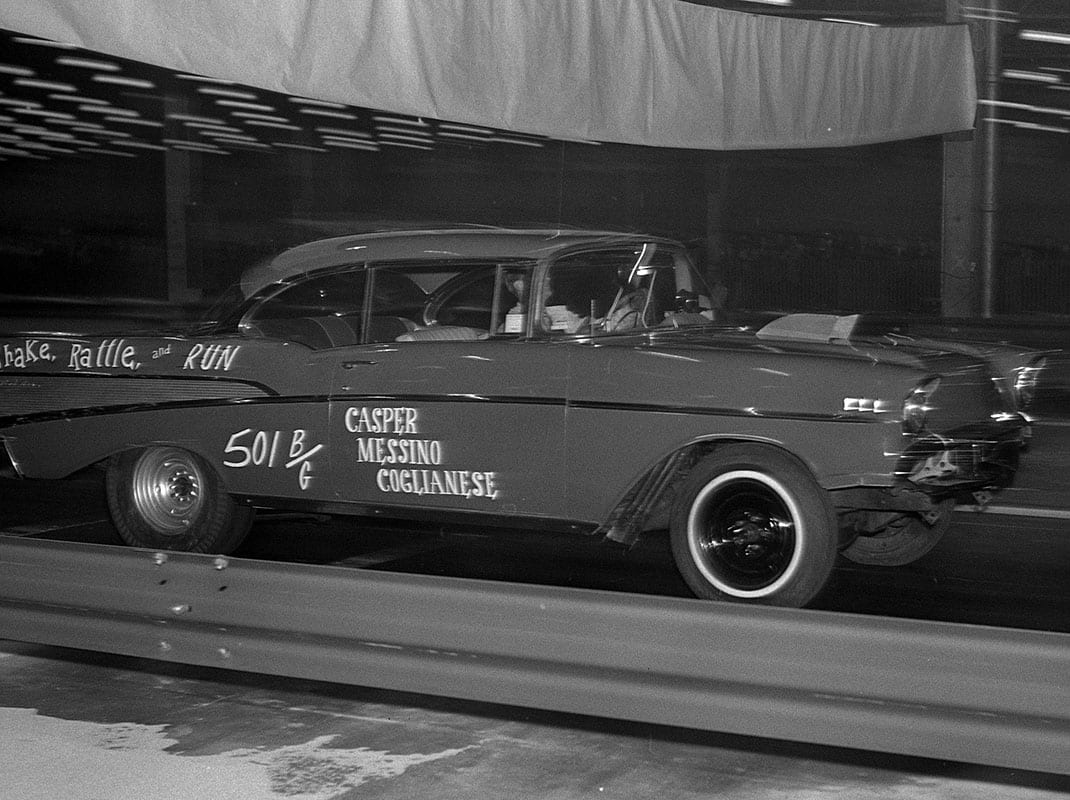A field of 148 entries showed up for the inaugural event with officials from U.S. 30 Drag Strip in Gary, Ind., and the Northern Indiana Timing Ass’n handling the races. More than 5,000 fans attended.
According to race records, Jack Sharkey and his ’63 Dodge made a pass of 5.31 seconds (79.31 mph). Another fast pass was made by the Casper-Messino-Coglianese ’57 Chevy Shake, Rattle & Run B/G class entry, posting a run of 5.57 seconds (73.17 mph).
The Jan. 27, 1963, program saw 247 cars make 2,190 runs with more than 5,000 paid admissions.
“I remember a guy driving a ’62 Pontiac won top eliminator a few times during those first events,” recalled Dave Bledsoe. “It was a widely circulated rumor that he was soaking his tires in a resin compound.”
The entries included the standard Fords, Chevrolets, Plymouths and Dodges but the roster also featured models from Oldsmobile, Volvo, Triumph, Studebaker, Corvair and Volkswagen, including a Karmann Ghia. There was even a 1961 Rambler station wagon thrown in for good measure.
Future Indianapolis 500 driver and open-wheel racing great Gary Bettenhausen was a participant.
Hay bales were placed at strategic positions and safety helmets were not required.

“There were basically no spectator facilities (seating),” remembered Bledsoe. “There were bathrooms and some concession stands, but no seating. The roof was too low to put in any kind of bleacher seating, plus the building was still used for the annual livestock convention, so everything had to be temporary. We did install some risers for standing but they could only hold so many. We used snow fencing to separate the spectators from the drag strip and return lane. The crowds were so large they would lean on the fencing and actually break it down. We had to get extra security to handle the crowds.
“I know we had one weekend where it snowed heavily and we had to steam clean the cars before they could compete,” Bledsoe noted. “Most of the stock classes drove their cars to the arena and thus the wheel wells and undercarriage were packed with snow. Now besides having to deal with the melting snow, you had all the water from the steam jenny. We tried to keep the starting line dry, but there were some spectacular burnouts in the staging area.”
Indoor drag racing was held in 1962-’63 and 1963-’64, but late in 1964 everything changed.
A press release from Chicago Auto Racing announced: “Special Chicago: The series of indoor drag races scheduled to begin Sunday, Jan. 3 (1965), at the International Amphitheatre on Chicago’s Southside have been cancelled due to the opposition of the Fire Prevention Bureau of the Chicago Fire Department. The bureau took the position due to the large number of cars inside the building with gasoline in their tanks.”
“It was to say the least — a huge success,” Bledsoe concluded. “The spectators loved it. The competitors loved it and I know the promoters loved it. It was great to be part of a novel and successful endeavor.” n
